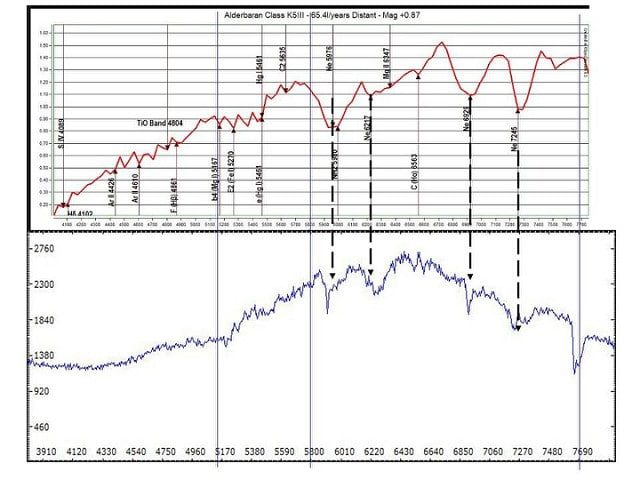Most chemical samples can be analyzed by either gas chromatography (GC) or high-performance liquid chromatography (HPLC).
But which one is right for you?
Both techniques exploit the same basic principles of all analytical techniques—compound separation, identification, and quantification. This can make it difficult to choose one over the other.
But knowing what differentiates HPLC and GC will definitely inform your decision and enhance your research.
So let me highlight and explain the key differences for you.
1. Nature of Samples
GC is suited to substances that are gaseous under ambient conditions or can undergo a change in state of matter to the gas phase with heat, such as volatile compounds.
Therefore, GC is “limited” to compounds that are low in molecular weight and stable at high temperatures.
So, if you’re working with proteins, forget it; GC is not for you. An alternative to non-volatile small molecules, such as amino acids and sugars, is to make them volatile by chemical derivatization. [1]
Now, your other option is HPLC. You can analyze volatile and non-volatile compounds, from low to high molecular weights, as long as they are soluble in a liquid phase. Also, you don’t need to worry about thermal stability since samples usually run at room temperature.
Surely, the wide sample scope offered by HPLC is one of its most attractive features. But if both techniques are still feasible for your sample, don’t make a decision yet—there’s more to consider.
2. Mobile Phase
As implied by their names, the mobile phase for HPLC is liquid, and for GC is gas. Another major difference is that the mobile phase is a key participant in sample separation for HPLC but not for GC.
HPLC uses solvent mixtures and gradients. The polarity, solubility, and complexity of the sample are some factors that influence the mobile phase selection. To be clear, choosing the mobile phase is a crucial part of HPLC, and troubleshooting for better separation is often complex.
In contrast, GC uses a pure inert gas as the mobile phase. It’s commonly known as the carrier gas because it carries molecules through the column.
Typically, the carrier gas used is chosen based on the detector, so it’s not something you have to worry about.
3. Resolution
If your sample is a mixture, bear in mind that resolution—a measurement of how well two peaks are separated—is affected by a large number of factors, such as:
- Flow rate.
- Amount of sample injected.
- Sample polarity/pH.
- Column length and diameter.
But it comes down to how similar the partitioning equilibrium between the mobile and stationary phases is for two compounds.
The more comparable the partitioning equilibrium is, the higher the chance of co-elution. If this happens, you may not be able to see where one peak ends and the other starts. So the resolution would be poor.
Since GC separation is based on compound volatility, similar molecular weights can result in comparable retention times and cause the peaks to overlap.
In the same way, the polarity of molecules affects the resolution in HPLC. That, and also the composition of the mobile phase.
4. Columns
HPLC columns are short, wide, and made with tightly packed material. In contrast, GC columns are long and narrow and come in two general types.
- Packed columns.
- Capillary columns.
A packed column is fully packed with the stationary phase. Capillary columns have a coating of stationary phase on their inner surface.
Capillary columns have many advantages over packed columns, including improved resolution, lower sample volumes, and quicker experimental times.
Because of this, capillary GC is usually preferred over HPLC (when possible) for analyzing samples containing a complex mixture of analytes.
5. Detection
Detectors respond to a molecule’s chemical or physical properties. Some detectors are universal. They can detect all (or most) compounds. Whereas others are selective by responding to a specific property.
So, detection can limit your options depending on which detector is available to you and if your sample has the necessary characteristics for its detection.
GC detectors vary in selectivity and sensitivity. [2] The flame ionization detector (FID) and the thermal conductivity detector (TCD) are two common examples. The first is selective to hydrocarbons, whereas the second is universal.
If your lab has an HPLC, chances are that it has an ultraviolet-visible (UV/Vis) spectroscopic detector, [3] which will respond to light-absorbing molecules such as aromatics.
The refractive index detector (RID) is also commonly used because it has universal detection capabilities. Yet it suffers from low sensitivity and incompatibility to gradient runs, so it isn’t ideal for complex samples.
Undoubtedly, the most powerful detection method is that offered by GC/MS and HPLC/MS (or LC/MS). These analytical systems combine the features of the chromatograph with that of a mass spectrometric (MS) detector.
So, one part separates components, and the other provides mass analysis for each component, giving you additional information for compound identification.
6. Relative Cost
If money is an issue, you may want to consider that a tank of gas is generally cheaper than solvents. In addition, because liquids are more viscous than gas, HPLC relies on pressure pumps to force the mobile phase through the column.
Since a pressurized system is more complex, this adds to the instrument’s operation costs. GC, on the other hand, is not very complex. Simply think of it as a large, sophisticated oven that requires a lower degree of maintenance.
Table 1 below summarizes the differences described above and lists typical sample types for both chromatography techniques.
Property | GC | HPLC |
Sample | Volatile. | Volatile/non-volatile. |
Resolution issues | Similar molecular weights. | Similar polarities. |
Column | Long and narrow. | Short and wide. |
Mobile phase | Pure inert gas. | Solvent mixture. |
Optional detectors | FID, hydrocarbons | UV/Vis, light absorption |
Relative cost | Low. | High. |
Example applications | Oils, plant pigments, pesticides, fatty acids, toxins, air samples, and drug abuse testing (e.g., cocaine). | Inorganic ions, polymers, sugars, nucleotides, vitamins, peptides, proteins, lipids, and tetracyclines. |
Differences Between HPLC and GC Summarized
Always remember that HPLC and GC are invaluable advancements in analytical instrumentation and indispensable in many scientific fields. But they are also susceptible to issues and limitations.
Common problems are related to selectivity, sensitivity, and resolution. And these are affected by the nature of the sample.
So when deciding between the two, it’s really not a question of instrument superiority, but of effectiveness to the sample of interest.
My advice to you is to evaluate your sample based on the factors described in this article and weigh your options with as much information as you can get. And now it’s up to you to make the final decision!
Will you run your sample on HPLC or fly it through GC? Let us know in the comments below.
Originally published April 2016. Reviewed and updated October 2022.
References
- Ahuja S (1976) Derivatization in gas chromatography. J Pharm Sci 65:163–82
- Hartmann CH (1971) Gas chromatography detectors. Anal Chem 43:113A–25A
- LaCourse WR (2002) Column liquid chromatography: equipment and instrumentation. Anal Chem 74:2813–32






